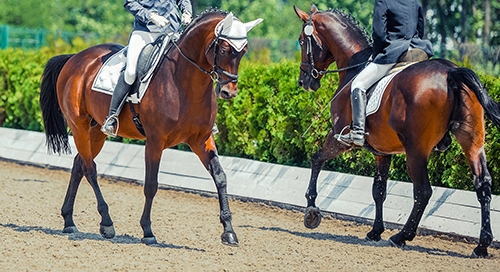You are having problems doing maneuvers with your horse. Let’s review the training scale.
‘The Dressage Training Scale’ works from the bottom up, in order to achieve the most difficult movements. Each level is essential to correct training, and must be addressed in order, although some overlap. Any problems in training can be traced back to a ‘hole’ in the scale.
Use the Training Scale as your mentor! Take notice of the Building Blocks at the bottom of the scale. DO NOT SKIP STEPS!
Be mindful of your body—all riders begin by using the horse for balance.
All riders begin by depending upon their horse to keep their balance.
Either they fall back into the saddle with a thump and pull on the reins or they tip forwards and often pinching their knees. Unfortunately it’s not just beginners that have these problems, even more advanced riders repeat these actions, just with much more subtly. However, both riders are negatively influencing their horse.
Be sure you work with a coach or trainer who can see those little balance changes, otherwise you may continue it hundreds of times over the years making it a very ingrained habit. Work on the lunge line can be incredibly valuable.
Managing fear is important for success.
Riders have a quotient of fear when they ride; and with good reason! The more fearful you are, the tighter your muscles will be. It may be something small like losing your balance that causes you to tighten, or you could be anxiously waiting for your horse to misbehave. Either way, it’s impossible to communicate effectively if all your focus is used to stay on, and little room is left for learning.
With FEAR, you cannot achieve RELAXATION.
You need a rudimentary understanding of the goals of training, plus riding theory.
To understand the goals of training, dive into the Training Scale. You’ll need to know a little bit of riding theory—how your aids influence the horse, why you want a horse to travel a certain way, and how to get him there.
Be a self-educator. Apart from the valuable information you glean from your coach, do some reading, audit clinics, watch a training videos, learn while on and off the horse. Be pro-active. Check out our ‘ENHANCE YOUR JOURNEY’ page, for our favourite links.
Feel your horse’s movement, and how both your bodies react.
“Feel” is just the beginning. Being able to recognize sensations that the horse does while moving, will forever open up the world of dressage. Close your eyes and feel. Become aware of each part of your body, and learn how to use different parts independently.




